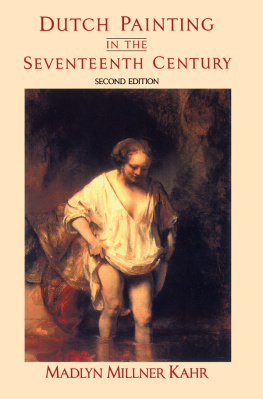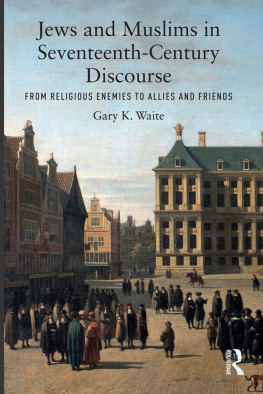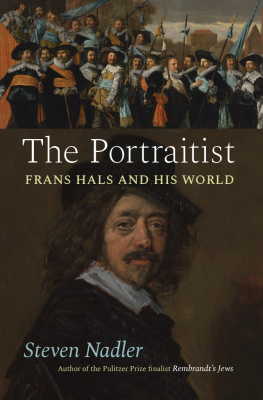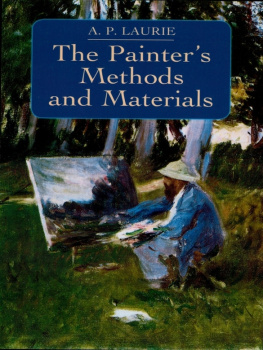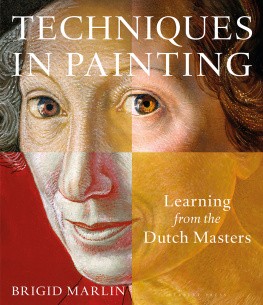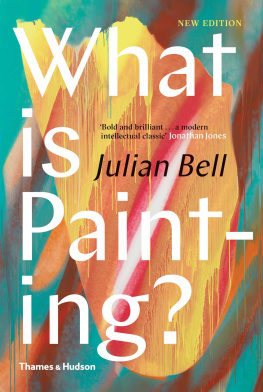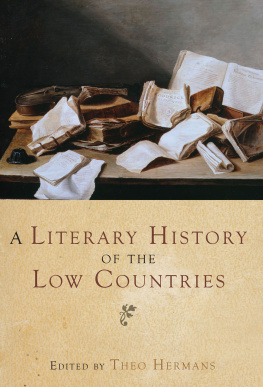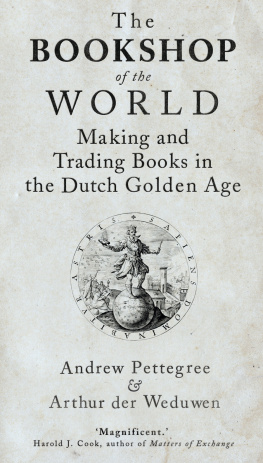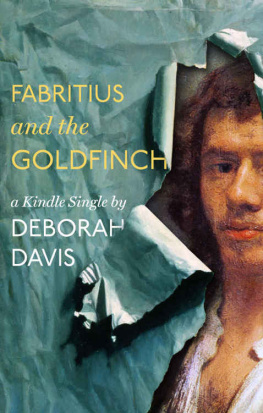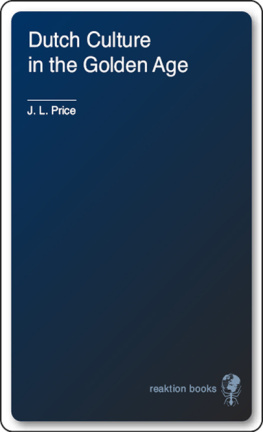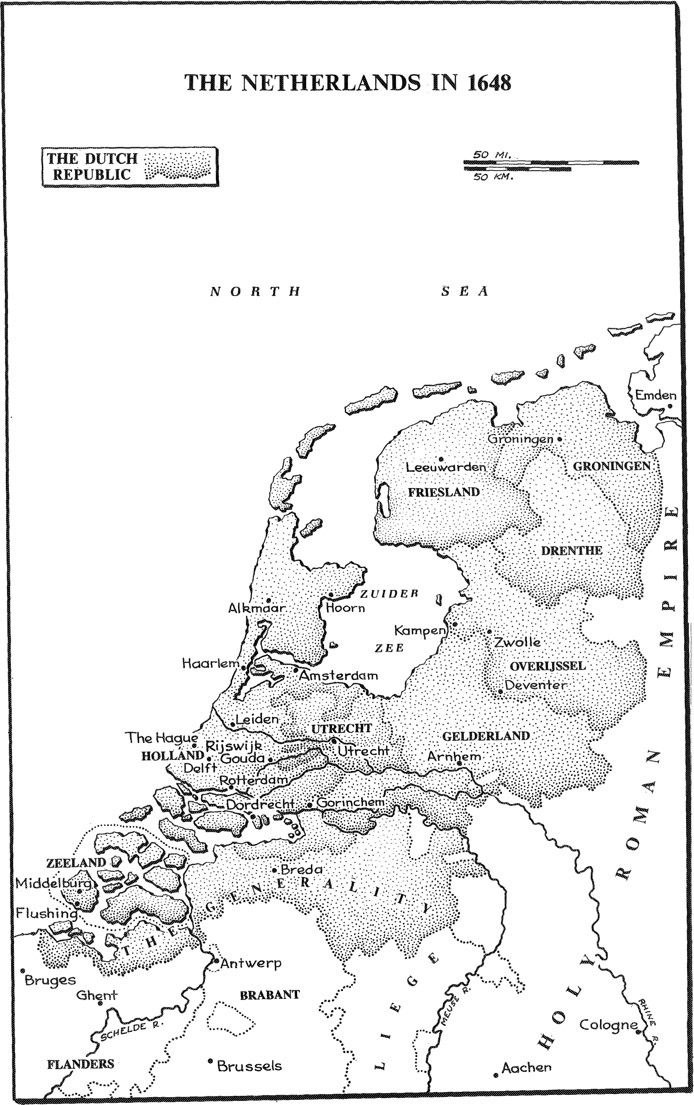Acknowledgment
It was my good fortune to be introduced to the study of Dutch painting by a great scholar and teacher. Professor Julius S. Held. For his contributions to this book specifically and to my work in general, I am deeply grateful .
First published 1978 by Westview Publishers
Published 2018 by Routledge
711 Third Avenue, New York, NY 10017, USA
2 Park Square, Milton Park, Abingdon, Oxon OX14 4RN
Routledge is an imprint of the Taylor & Francis Group, an informa business
DUTCH PAINTING IN THE SEVENTEENTH CENTURY, SECOND EDITION.
Copyright 1978, 1993 by Madlyn Millner Kahr.
All rights reserved. No part of this book may be reprinted or reproduced or utilised in any form or by any electronic, mechanical, or other means, now known or hereafter invented, including photocopying and recording, or in any information storage or retrieval system, without permission in writing from the publishers.
Notice:
Product or corporate names may be trademarks or registered trademarks, and are used only for identification and explanation without intent to infringe.
Library of Congress Cataloging in Publication Data
Kahr, Madlyn Millner.
Dutch painting in the seventeenth century.
(Icon editions)
Bibliography: p.
Includes index.
ISBN 006-4302199 (pbk.)
1. Painting, Dutch. 2. PaintingModern17th-18th
centuriesNetherlands. I. Title.
ND646.K261978759.949278377
ISBN 13: 9780-06430219-7 (pbk)

THE END of the Golden Age of Dutch painting did not come with the suddenness of a curtain descending to mark the end of a play. It was more like the gradual dimming of the golden sunlight as dusk approaches, extending through the last quarter of the seventeenth century. There was a brilliant afterglow in the works of Aert de Gelder (), so surprisingly produced by Meindert Hobbema in 1689. There were also some estimable artists who came to maturity during this period, such as Adriaen Coorte, who painted still-lifes of consummate delicacy between 1685 and 1703, and Rachel Ruysch, a gifted painter of flowers (16641750). The polished academic style of Adriaen van der Werff (16591722), imbued with fashionable French elegance, brought favor and high prices for his portraits, scenes of social life, and history subjects. On the whole, however, paintings made in the last decades of the century tended to be dry and derivative. The great creative surge had ended, along with the period of rapid economic expansion.
As early as 1647 the wish for baroque grandeur had moved Amalia van Solms, widow of the Stadholder Frederik Hendrik, to choose the Antwerp style of painting to decorate the Orange Room of her new country house at The Hague, the Huis ten Bosch (House in the Woods). The allegorical program., planned by Constantijn Huygens after the death of Frederik Hendrik, was executed by Jacob lordaens and other Flemish painters, along with such Dutch artists as the Stadholders old court painter, Honthorst; Ian Lievens, who had effeetivley adopted the Antwerp style; and Caesar van Everdingen (160678), whose classicizing style qualified him for admittance to this select company. The large allegorical paintings in the new Town Hall at Amsterdam were designed by Flinck and Bol, who had abandoned the style of their teacher, Rembrandt, in favor of imitations of the international baroque style that was associated with political power. For the propaganda purposes served by these ensembles of paintings, Dutch realism was not considered appropriate.
Even before the Peace of Minster in 1648, there was evidence of French influence in literature and classical studies in the United Provinces. With the exception of painting, the Dutch had not developed fully independent culture. The French taste in fashion, literature, art, and etiquette, always prominent at the court in The Hague, spread widely through Dutch society during the last quarter of the seventeenth century. Though the French invasion of 1672 was repulsed, French style conquered the Dutch Republic. The native tradition, undervalued by the tastemakers, lost support and prestige. Reflecting French art theory, Samuel van Hoogstraten in his book published in 1678 stressed the importance of fixed rules. His judgment that only the charming and elegant are worthy subjects for painting speaks for the dominant taste of the time. In keeping with this point of view, he criticized Rembrandts lack of taste and his choice of vulgar subjects.
The striving for a more aristocratic, elaborate style and more pretentious subjects in painting led to arid academicism. The vigor and clarity of earlier Dutch painting were lost. Small, highly finished paintings in the manner of Dou were among the pale reflections of stronger works from the earlier days that continued to be in demand through the eighteenth century and even into the nineteenth, while the general public underesteemed the accomplishments of the great artists and completely forgot some of them.
When it abandoned its intimate contact with the observed world, Dutch art lost its vitality, like Antaeus when his feet lost contact with the earth. The rich diversity of Dutch art of the Golden Age, with its profound expression of human experience, became a treasure of the past, to be rediscovered by future generations.
Contents
Guide
Icon Editions
Abercrombie, S./ Philosophy of Interior Design ISBN 006-430194-X
Adams, L./ Art and Psychoanalysis ISBN 008-4302067
Baigell, M./ Concise History of American Painting & Sculpture IN-85
Baigell, M./ Dictionary of American Art IN-78
Barnett, J./ Elusive City IN-155
Beck, J./ Italian Renaissance Painting IN-82
Berger, M./ How Art Becomes History ISBN 006-4302024
Berger, M./ Modern Art and Society ISBN 006-4302288
Broude, N., and Garrard, M./ The Expanding Discourse ISBN 006-4302075
Broude, W., and Garrard, M./ Feminism and Art History IN-117
Bryson, Holly, Moxey/ Visual Theory ISBN 006-4301982
Burn, A.R., and M./ The Living Past of Greece ISBN 006-4302253
Cernuschi, C./ Jackson Pollock ISBN 006-4309770
Clark, K./ Landscape Into Art ISBN 006-4300889
Cole, B./ Giotto and Florentine Painting : 12801375 IN-71
Cole, B./ Italian Art , 12501550 IN-162
Cole, B./ Piero della Francesca ISBN 006-4302040
Cole, B./ The Renaissance Artist at Work: Pisano to Titian IN-129
Corbin, G.A./ Native Arts of North America, Africa, and the South Pacific IN-174
Daix, P./ Picasso: Life and Art ISBN 006-4302016
Dockstader, F./ Weaving Arts of the North American Indian ISBN 006-4303977
Eitner, L./ An Outline of 19th Century European Painting: David through Czanne ISBN 006-4302237
Evans, W./ Walker Evans at Work ISBN 006-430230-X
Frasclna, F., and Harrison, C./ Modern Art & Modernism IN-124
Frasclna, F./ Pollock and After IN-147
Frascina, F., and Harris, J./ Art in Modern Culture ISBN 006-4300245
Frueh, J., et al./ New Feminist Criticism: Art, Identity, Action ISBN 006-4309096
Goldwater, R./ Symbolism IN-95
Gowans, A./ Styles and Types of North American Architecture ISBN 006-4301753
Hail, J./ Dictionary of Subjects & Symbols in Art IN-100
Henri, J./ The Art Spirit IN-138
Hibbard, H./ Caravaggio IN-128
Hibbard, H./ Michelangelo, Second Edition IN-148
Hoffman, K./ Explorations: Visual Arts Since 1945 ISBN 006-4302008

